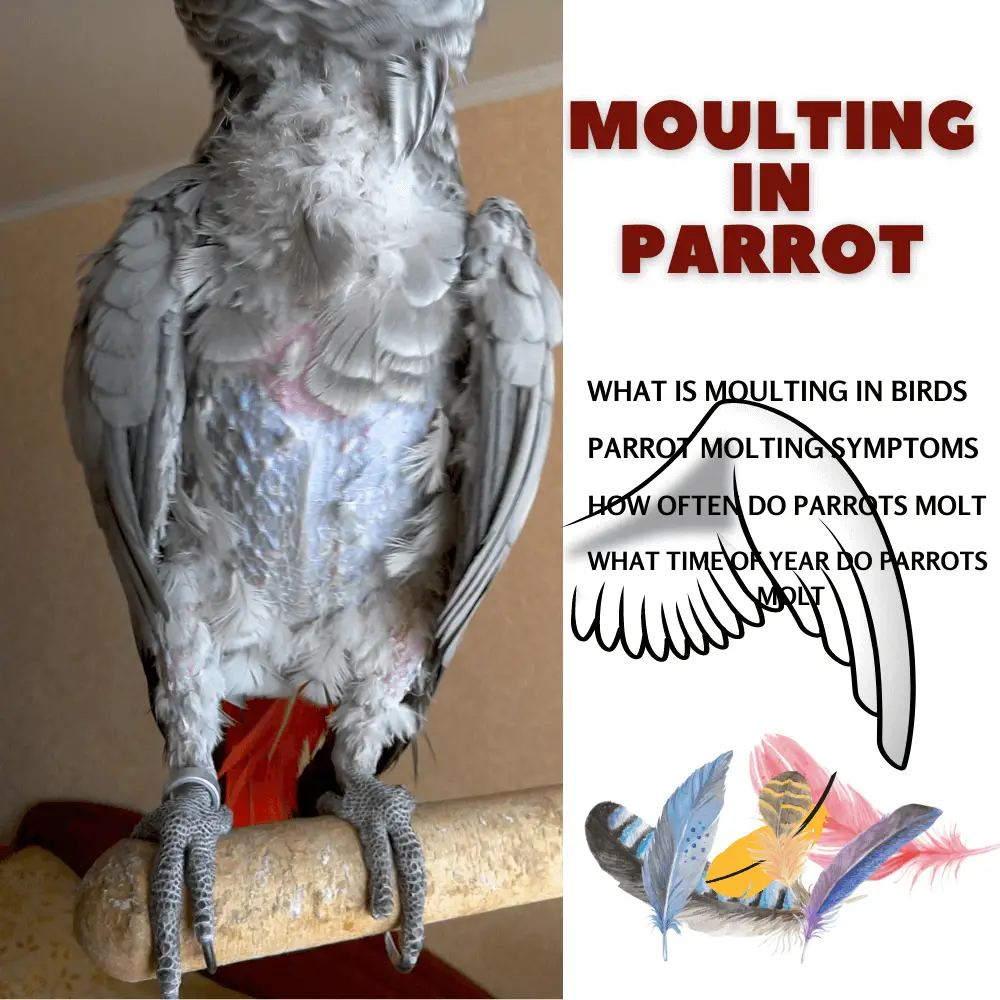Moulting in Parrot: Moulting can be a delicate phase for the parrot, hence the need to understand this phenomenon and respond to the specific needs of the animal.
What is moulting in birds?
 Moulting in Parrot
Moulting in Parrot
Moulting is a phase during which the gradual replacement of all of the bird’s feathers takes place.
It is also possible to see the old feathers accumulate at the bottom of the cage or the aviary. B
y losing its feathers, the bird thus leaves room for new ones that will gradually cover its body.
Moulting can change the behavior of the bird. He generally tends to become less active, to sleep more and his songs become scarce.
In certain cases, one can note, conversely, a great agitation; the bird becomes very stressed, even irritable.
It can also scratch, but this attitude is not abnormal; the bird does it to facilitate the fall of its old feathers.
When does the moult arrive and how long does it take?
The moult occurs once a year in the adult bird and generally takes place after the summer solstice. The frequency and duration vary, however, depending on the species.
In budgerigars and other psittacidae, the moult continues throughout the year, while experiencing peaks in spring and summer.
For their part, passerines moult in late summer, after the breeding season. It can last 4 to 6 weeks.
What problems can arise during the molt?
If the moult lasts several months or if the bird can no longer fly normally, it is possible that we are dealing with a false moult. This phenomenon is favored by stress.
Featherless areas of the body can be caused by parasites or disease. Just as pecking, which consists of the bird tearing off feathers or doing it to its peers, is a sign of stress and discomfort. It is necessary to take him to the veterinarian so that the latter can identify the source of the problem and prescribe the appropriate treatment.
The luminosity and the temperature are also determining factors as to the feather condition.
Excesses or deficiencies in terms of exposure to natural light give rise to disorders at this level. A bird evolving in a too bright environment is likely to lose its feathers.
Read also: “Parrot caring“
The bird’s food needs during the moult
During the moult, the bird’s organism makes great use of its calcium reserves to ensure the development of new feathers. There is, therefore, less for the bones, which become more vulnerable to damage.
How often do parrots molt
As the feathers are made of keratin, the need for quality protein and sulfur amino acids increases.
Eggs, legumes, and grains contain it. But the adjustment of the quantities depends on the species; it is, therefore, better to seek advice from the veterinarian. The latter can also prescribe food supplements if necessary.
How to Care for a Molting Parrot updated 2021
SOURCE: The Zoological World

